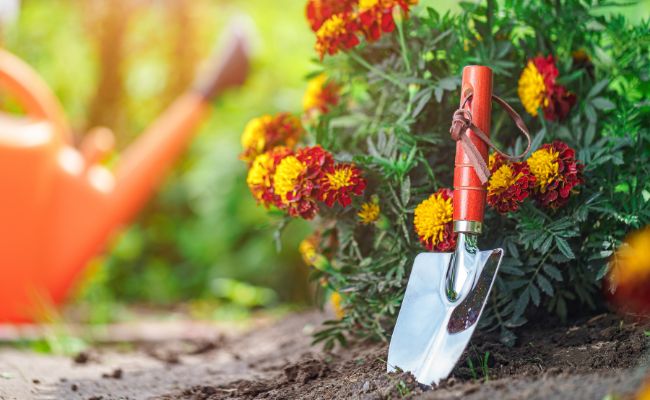Strategies to Mulch Flower Beds Over the Winter
Winter mulch safeguards delicate vegetation from chilly damage and enhances plant nicely being by bettering soil development, boosting watering retention, and suppressing weeds. Nonetheless, mulch have to be utilized on the right time and within the applicable means for max benefits—and some vegetation shouldn’t be mulched the least bit! In case you’re capable of grasp the art work of winter mulching.
This data will stroll you via the basics of when and strategies to mulch flower beds over winter and support you steer clear of frequent mulching errors.
Meet the Expert
Alan Mitchell is the highest gardener at Dr. Neil’s Yard, located in Edinburgh, Scotland.
Maryviolet / Getty Pictures
When Must You Apply Winter Mulch?
Timing your winter mulch utility precisely will make it easier to steer clear of damaged roots and flower buds, and it may even lengthen your rising season. Nonetheless exactly when mulch have to be utilized is decided by the types of vegetation you’re rising and your rising zone.
Annuals
Since annuals are sometimes additional cold-sensitive than perennial vegetation, it’s smart that they should be mulched a bit earlier. For in all probability essentially the most half, the most effective time to mulch annuals is when the local weather begins to relax and sooner than the first frost.
Perennials
Mulching perennials too early can keep vegetation from entering into winter dormancy and improve the chances of chilly damage. To steer clear of this, mulch perennials when the vegetation die once more after the first arduous freeze.
Greens
Some chilly hardy greens may very well be grown through winter in light climates, nevertheless they’re additional susceptible to survive with some mulch. For biggest outcomes, take care of vegetation like beets, carrots, and radishes like annuals and mulch them when the local weather begins to relax.
Bushes and Shrubs
Like perennials, timber and shrubs have to be mulched after the first arduous freeze. Mulching these vegetation too early may attraction to rodents and improve the chances of rot.
Tim Sackton / Flickr / CC BY-SA 2.0
Want additional gardening concepts? Be a part of our free gardening publication for our best-growing concepts, troubleshooting hacks, and further!
5 Benefits of Winter Mulching
Alan Mitchell, the highest gardener of Dr. Neil’s Yard in Edinburgh, Scotland, explains how winter mulching is helpful in some methods.
“It suppresses weeds, retains moisture, helps vegetation tackle temperature extremes, and is especially useful for establishing youthful timber,” Mitchell says. “It moreover clearly outlines an area spherical vegetation the place you shouldn’t cut back or trim grass.”
Together with pure matter to the soil will help with fertility and moisture retention, Mitchell gives. Clearly, winter mulching has many advantages and it helps vegetation in a whole lot of different methods. Nonetheless as Mitchell elements out, a variety of the necessary the reason why you may want to mulch in winter embrace:
- Plant security. Winter mulch is very helpful for vegetation on the sting of their hardiness zone, along with new plantings. It protects tender stems and shoots from frost damage and reduces frost heaving, which could damage roots and unearth shallow vegetation.
- Soil enchancment. Mulch gives pure matter to the soil as a result of it breaks down, nevertheless mulching moreover improves water retention, stabilizes soil temperatures, and prevents erosion.
- Lowered weeds. Weedy improvement slows in winter, nevertheless sturdy weeds can have a improvement spurt all through spells of warmth local weather. Nonetheless, weeds have a loads more durable time intruding for individuals who keep your soil coated with mulch.
- A lot much less work in spring. Mulching in winter will make it easier to cross off one merchandise in your busy spring gardening to-do file.
- Wildlife habitat. Pure mulches current a habitat for hibernating pollinators and totally different useful bugs. To not level out, mulching moreover will enhance the train of earthworms and useful microbes.
Tatiana Terekhina / Getty Pictures
Which Crops Shouldn’t You Mulch in Winter?
Although mulch is useful to most vegetation, there are a selection of vegetation that you may be want to steer clear of mulching altogether. In case you do decide to mulch these vegetation, apply solely a lightweight layer of mulch spherical their roots.
- Rot delicate vegetation. Mulch is well-tolerated by vegetation that naturally develop in moist soils and shady spots, however it’s in all probability not the one possibility for some vegetation that favor drier soil. This accommodates woody-stemmed herbs, like lavender and creeping thyme, along with salvia and veronica.
- Succulents. Succulents, like sedum, moreover favor comparatively dry soil and they also may rot under thick layers of mulch.
- Spring bulbs. Many spring bulbs don’t need mulch and heavy functions of mulch can keep them from sprouting.
- Self-sowing vegetation. If you would like vegetation like coneflowers and black-eyed Susan to self-sow seeds, steer clear of together with loads mulch. These vegetation readily self-sow for individuals who enable them to, whereas mulching can limit their unfold.
Ekaterina Petruhan / Getty Pictures
How So much Mulch Do You Need for Winter?
Within the current day, there are tons of pure mulches to pick out from. Picket and bark mulches, along with pine straw, are always widespread picks for ornamental beds, whereas compost and weed-free straw are usually utilized in vegetable gardens.
How loads mulch you’ll need in your yard is decided by how deep you’d like your mulch layer to be and the particle measurement of the mulch.
Excessive-quality Particle Mulches
Compost, grass clippings, and totally different fine-grained mulches have to be utilized in layers that measure between 1 and three inches deep. Thicker functions of these mulches can condense and set off drainage factors.
Coarse Particle Mulches
Straw, chopped autumn leaves, and mulches product of various cumbersome objects have to be utilized in thicker, 3 to 6-inch deep layers. Skinny functions of these mulches can allow weed seeds to sprout.
It would not matter what kind of mulch you choose to utilize, you’ll need about 1/3 of a cubic yard of mulch to cowl 100 sq. ft of gardening space with 1 inch of mulch. That suggests that when you want to apply 3 inches of straw mulch over a 100-square-foot veggie yard, you’ll need about 1 cubic yard of mulch.




:max_bytes(150000):strip_icc()/WateringIndoorPlants-63cbd19ccbf3432085ae4c158a1c3968.jpg?w=1200&resize=1200,0&ssl=1)
:max_bytes(150000):strip_icc()/GettyImages-1271576294-3c5093b95d344c24bae2d66c22a1377a.jpg?w=1200&resize=1200,0&ssl=1)
:max_bytes(150000):strip_icc()/GettyImages-1303679728-12dae6ee00e64f4bbd7010a4f794ed96.jpg?w=1200&resize=1200,0&ssl=1)